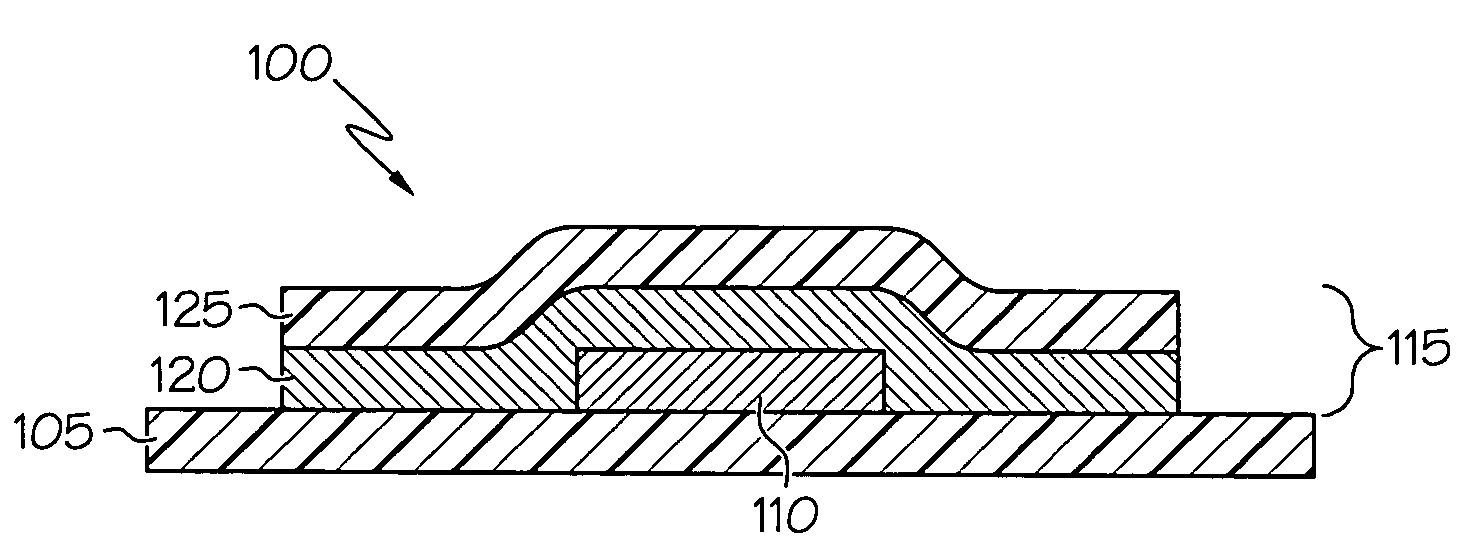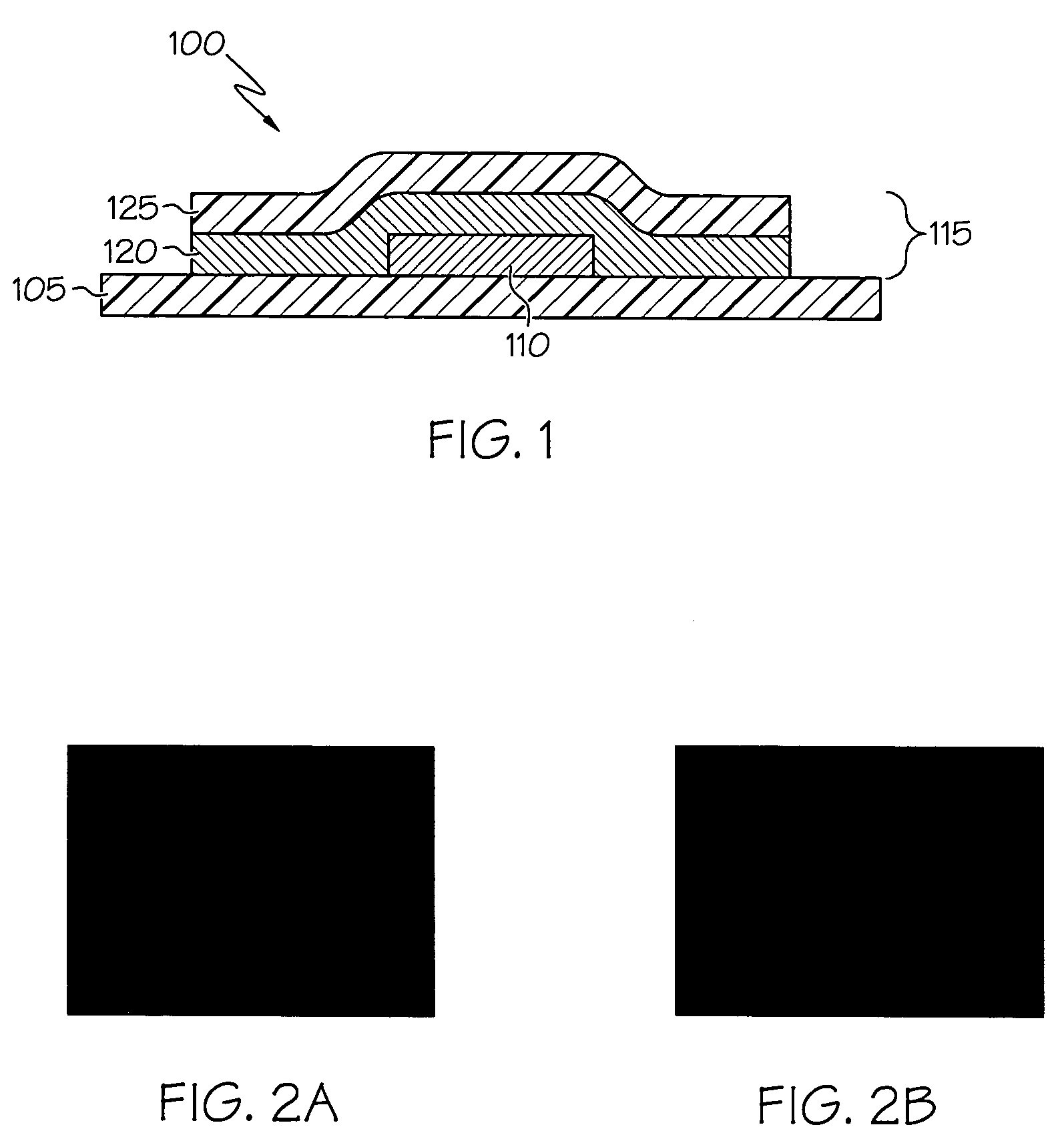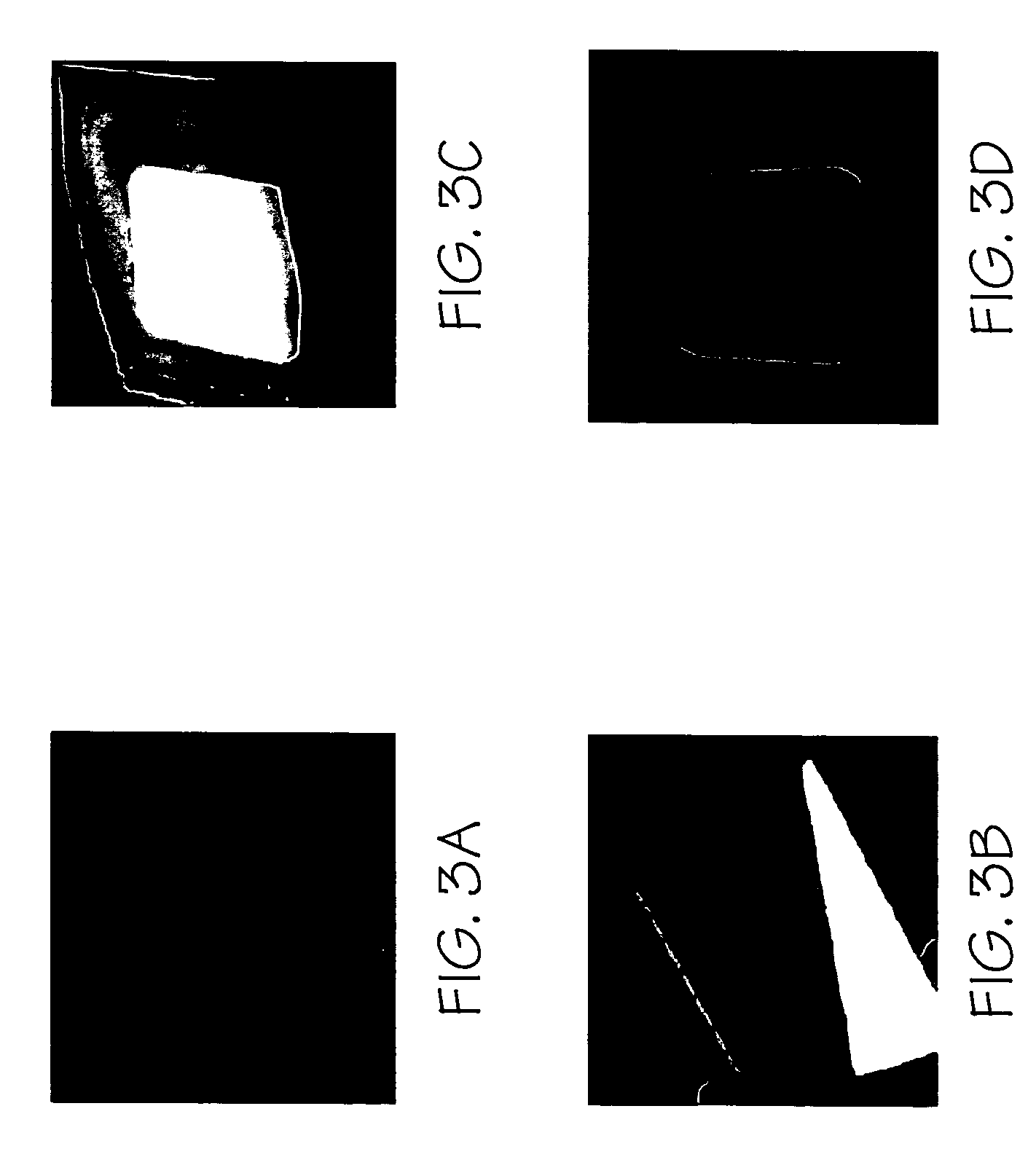Encapsulated devices and method of making
a technology of encapsulation and devices, applied in the field of encapsulation devices, can solve the problems of device degradation, device damage, and permeation of environmental gases, and achieve the effects of reducing the number of ester moieties, reducing the number of polar regions, and high packing density
- Summary
- Abstract
- Description
- Claims
- Application Information
AI Technical Summary
Benefits of technology
Problems solved by technology
Method used
Image
Examples
example 1
[0068]Polymer films were made using different blends of acrylate monomers. The formulations are shown in Table 1. Polymer layers made using tripropyleneglycol diacrylate have been described in, for example, “Plasma treatment of PET and acrylic coating surfaces-I. In-situ XPS measurements,” Shi, et al., J. Adhesion Sci. Technol., Vol. 14, No. 12, pp 1485-1498 (2000), which is incorporated herein by reference. Formulation 1, which incorporates tripropyleneglycol diacrylate, has been used as a basis for comparison for the other formulations.
[0069]
TABLE 1Component Wt %Component1234567Methoxy Tripropyleneglycol Acrylate3.5Lauryl Acrylate17.423.222.2Hexanediol Diacrylate (HDODA)65.162.219.5Tripropyleneglycol Diacrylate (TPGDA)69.6Dodecanediol Dimethacrylate73.5Propoxylated Hexanediol Diacrylate93.0Trimethylolpropane Triacrylate (TMPTA)8.010.6Triethoxy Trimethylolpropane Triacrylate14.5Esterdiol diacrylate99Polyfunctional Adhesion Promoter19.8Polybutadiene Dimethacrylate79.4Photoinitiator ...
example 2
[0079]The change in transmission of Ca coupons on glass substrates encapsulated with a multilayer barrier is a good vehicle to test the effectiveness of barrier structures. In the examples shown in FIG. 6A-C the multilayer structure was constituted by an oxide layer 100 nm thick and 6 polymer / oxide pairs [polymer (0.5 μm) / oxide (40 nm)]. Encapsulated Ca coupons were aged for 400 hr at 60° C. and 90% RH. FIG. 6A shows that formulation 4 (5.5×1020 n / ml of ether linkages) has no increased transmission, and thus, no barrier failure. FIG. 6B shows that formulation 1 (3.6×1021 n / ml of ether linkages) has increased transmission at the edges of the calcium area. In FIG. 6C, the entire calcium area is fading, indicating extreme barrier failure for formulation 5 (3.2×1021 n / ml of ether linkages). FIG. 6D shows a Ca coupon with a multilayer structure constituted by an oxide layer 100 nm thick and only 3 polymer / oxide pairs (polymer (0.7 μm) / oxide (40 nm)). The polymer layer was made with Formu...
example 3
[0084]Barrier stacks were formed on OLED test pixels using various polymer formulations. The samples were stored for 500 hr and tested in a dry box to avoid exposure to moisture. Differences were visually observed within 24 hr.
[0085]FIG. 9A shows formulation 1 (3.6×1021 n / ml of ether linkages; 4.7—Ohnishi parameter) after coating, and FIG. 9B shows the appearance of black spots after storage. FIG. 9C shows formulation 4 (5.×1020 of ether linkages; 4.2—Ohnishi parameter) after coating, while FIG. 9D shows that no black spots appeared after storage.
[0086]Polymeric decoupling layers can be formed from blends of one or more reactive precursors. These will have one or more reactive groups per unit (molecule) that undergo a linking / cross-linking reaction. The reactive groups born by all members of the blend may be the same (e.g., acrylic, methacrylic and vinyl), which self react and / or undergo addition reactions to form chains (e.g. polymethylmethacrylate or polyvinyl acetate). A distinct...
PUM
 Login to View More
Login to View More Abstract
Description
Claims
Application Information
 Login to View More
Login to View More - R&D
- Intellectual Property
- Life Sciences
- Materials
- Tech Scout
- Unparalleled Data Quality
- Higher Quality Content
- 60% Fewer Hallucinations
Browse by: Latest US Patents, China's latest patents, Technical Efficacy Thesaurus, Application Domain, Technology Topic, Popular Technical Reports.
© 2025 PatSnap. All rights reserved.Legal|Privacy policy|Modern Slavery Act Transparency Statement|Sitemap|About US| Contact US: help@patsnap.com



